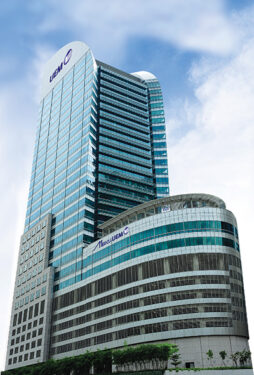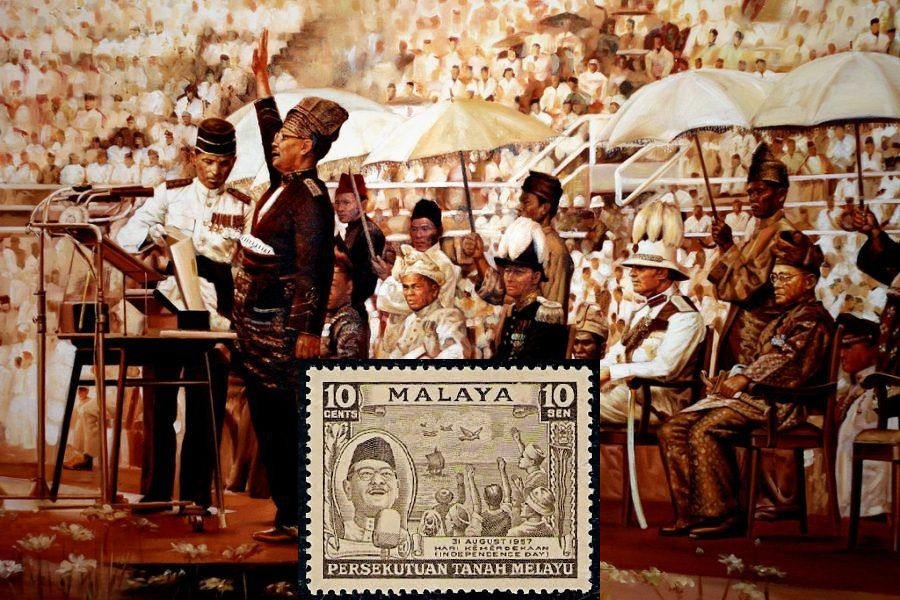IF YOU ask Tan Sri Halim Saad the above question, he would probably yell at the top of his voice, “Dr Mahathir stole from me big time!!!”
Any reasonable bystander would feel very sorry for Halim after checking out PLUS Malaysia Bhd’s financial report after it was snatched off from him.
For example, PLUS’ total assets were at RM33.22 bil as of Dec 31, 2016. For its financial year ended end-December 2016, the group registered a profit after tax of RM288.2 mil and RM4.07 bil in revenue.
To recap, the tycoon filed a suit at the Kuala Lumpur High Court on Aug 2 in relation to the government’s takeover of United Engineers Malaysia Bhd (UEM) and Renong Bhd by naming twice former premier Dr Mahathir, then finance minister II Tan Sri Nor Mohamed Yakcop and the government as defendants.
In “The Reply to Defence” dated Oct 30, the once dubbed “Renong blue-eyed boy” claimed that he had no choice but to abide by Dr Mahathir’s directive to abandon his plan for the acquisition of UEM and disposed of his shares in Renong two decades ago.
The 70-year-old entrepreneur claimed he was not given any option nor choice in his meetings with Dr Mahathir and Nor Mohamed between July 12 and 17, 2001.
On Oct 6, the defendants contended that Halim willingly disposed of his shares in Renong with compensation totalling RM165 mil. Thy further claimed that under the plaintiff’s management, Renong Group’s market capitalisation declined by 41% from RM7.2 bil in 1997 to RM4.2 bil in 2000.
“At the material time, the entire Renong-UEM group of companies comprised a significant portion of the Kuala Lumpur Composite Index. Their weak performance had had a negative impact and burdened the overall stock market,” the defendants claimed.
“To rectify the situation, Dr Mahathir agreed with Nor Mohamed’s suggestions to restructure both Renong and UEM.”

Losses in Renong, UEM not my doing
However, Halim argued that the government had not in any way paid any compensation to him.
“The plaintiff (Halim) denies that he voluntarily gave up his said property rights on the understanding that he would not receive fair compensation or that the sum of RM165 mil paid to him was compensation for the said acquisition,” his affidavit read.
“The RM165 mil received by the plaintiff from Khazanah was to compensate him for having paid RM100 mil to UEM in connection with the put option which the government then requested UEM and Halim to let lapse.
“The payment also to compensate the plaintiff’s losses due to the foreclosure of various assets pledged by him to various financiers for the purpose of financing the said RM100 mil.”
Halim went out to point out that the losses incurred by UEM and Renong during that period were due to the 1997 Asian Financial Crisis (AFC), political instability and the government’s interference in economic matters.
If there is anyone to take the rap, it should b the then PM for aggravating the adverse impact of the financial crisis.
“The Kuala Lumpur Stock Exchange was adversely affected at that time due to the 1997 AFC and the monetary policies put in place by Dr Mahathir which had the effect of isolating the country, in particular from foreign investors,” insisted Halim.
He referred to the slew of policies implemented by the Mahathir administration to contain the 1997 crisis such as the artificial ringgit peg at RM3.80/US$1, the restriction on companies declaring and paying dividends, and the shutting down of offshore ringgit transactions.

Uncertain times
Halim also mentioned political instability caused by the arrest and subsequent prosecution of the then deputy PM and finance minister Datuk Seri Anwar Ibrahim.
“The said incident and events preceding it, including the 1988 attack on the Judiciary, gave rise to an impression that the federal government was not concerned with the rule of law,” he reminisced.
“It was also perceived that there was interference by the federal government in economic matters with the deployment of government-controlled public funds being seen as a bail-out for some politically well-connected and influential persons.”
Halim claimed these matters made Malaysia unattractive to foreign investors, resulting in a sharp decline in foreign direct investments in the country.
The plaintiff is seeking a court declaration that the government was obliged to provide him with adequate compensation within the meaning of Article 13 of the Federal Constitution.
Halim also seeks compensation from the government as well as exemplary and aggravated damages.
How Tun M & gang foiled Halim’s Renong takeover
During the peak of the 1997 Financial Crisis, a put option (right to sell) was granted by Halim to UEM in the wake of cash-rich UEM’s purchase of a third of its parent, Renong at the inflated price of RM2.34 – using up RM2.34 bil of its cash.
There were many sceptics that did not seriously believe that Halim would be able to honour the put option if UEM ever exercised it.
The payment terms of the put option that Halim agreed to pay were as follows:
- RM100 mil on Feb 14t, 2001;
- RM100 mil July 14, 2001;
- RM100 mil on Dec 14, 2001; and
- The balance together with accruing interest on April 14, 2002.

The payment of the first RM100 mil was duly settled. According to an informer close to Halim, the tycoon had also planned for a general offer (GO) for UEM after the GO of Renong.
However, before the deadline for the payment of the second tranche on July 12, 2001, Halim was called by Dr Mahathir who was also the finance minister and Nor Mohamad in his capacity as the second finance minister to stop the put option or GO.
This was confirmed by Halim’s then legal counsel Tan Sri Rashid Manaf who attended a meeting with Nor Mohamed with the latter having said that “in no uncertain terms are you to continue with your proposed GO or proceed with the put option”.
It was clear that at all material times that Halim had the financial support from Credit Suisse to complete the put option/GO but he was told not to proceed. Credit Suisse was accommodative to Halim as they understand the value of UEM’s jewel, ie the North-South Expressway concession is much more than the exercise price of the put option.

When Halim objected to Nor Mohamed’s demand, the latter then summoned the then Securities Commission Malaysia (SC) chairman (Tan Sri Ali Kadir) and instructed him to engage board members of UEM with strict instruction of not to allow Halim to proceed with the put option or the GO.
Given the actions and high-handed behaviour of Nor Mohamed at that time, lawyer Rashid advised Halim not to go against the wishes of the people in power but to accept the terms given by the former.
The people in power at that time were no other than Dr Mahathir and his goons who have track records of using detention without trial by invoking Internal Security Act (ISA) on descending voices.
If Halim had no money, why did Dr Mahathir’s men go to this extent to threaten the UEM board members in order to stop the put option or the GO? This was a blatant act of depriving Halim’s right to his assets.
Interestingly, Halim’s action of not proceeding with the put option or GO has always been misinterpreted by the public as a bailout by the government. It is a matter of fact that under no circumstances did Renong Group (which was under Halim’s control) require any bailout by the government.
Why “the people in power” or Dr Mahathir’s government was so eager instead to control a fully restructured group like Renong-UEM? A rescue plan or a daylight robbery? – Nov 5, 2023
Abd Rahman Sidek is a FocusM reader.
The views expressed are solely of the author and do not necessarily reflect those of Focus Malaysia.
Main pic credit: Berita Harian










